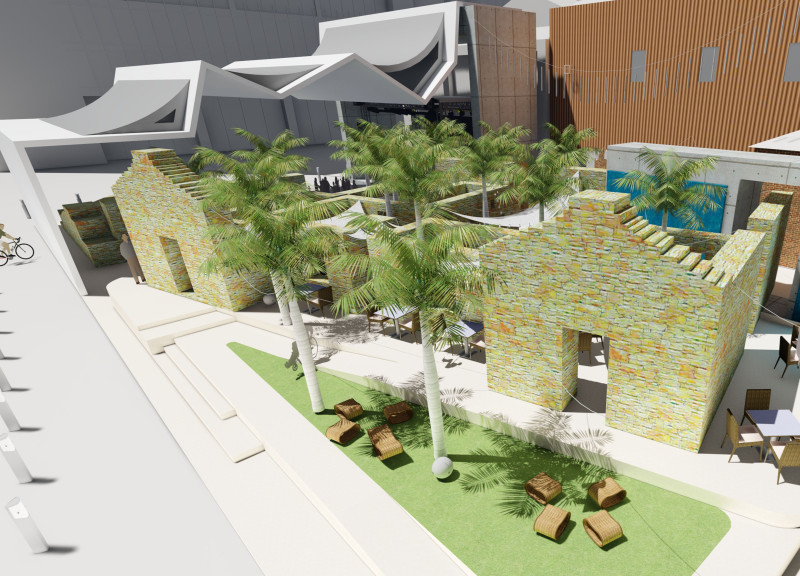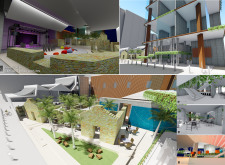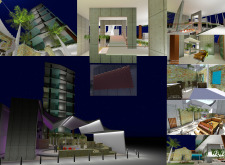5 key facts about this project
As one delves into the architectural details of the project, it becomes apparent that various materials have been judiciously selected to enhance both the structural integrity and visual character of the building. The use of materials such as concrete, glass, wood, and metal are not just directions of construction but also serve as expressions of the design philosophy. Concrete provides a firm and enduring foundation that evokes strength, while the generous use of glass allows for substantial natural light to infiltrate the interiors, fostering a connection between the indoor spaces and the outside environment. Wood elements introduce warmth and texture, creating inviting spaces that evoke comfort and hospitality. Metal accents punctuate the design, adding a contemporary edge and a touch of modernity.
Unique design approaches are evident throughout the project, particularly in how the architect has tackled spatial organization and flow. The layout encourages natural movement through various areas, promoting interaction and community. Open-plan spaces are integrated alongside more defined areas, allowing for versatility in use and adaptability to changing needs. This fluidity in design amplifies the functional capacity of the architecture, aligning with modern lifestyles that favor multifunctional environments.
The architectural forms are characterized by clean lines and thoughtful geometry, further reinforcing a sense of harmony and balance. A keen attention to detail can be observed in various elements such as window placements, ceiling heights, and the incorporation of outdoor terraces or green roofs, which not only enhance the aesthetic quality but also contribute to sustainability efforts. The project may include passive solar design strategies that leverage natural resources for heating and cooling, thus reducing energy consumption.
Landscaping also plays a pivotal role in the overall impact of the project. Thoughtfully designed outdoor spaces invite occupants to enjoy the surrounding nature, potentially integrating native plantings that require less maintenance while offering visual appeal. Pathways, seating areas, and communal gardens foster a sense of community and encourage social interaction among users.
Among the noteworthy aspects of this architectural design project is its commitment to sustainability and environmental responsibility. By utilizing energy-efficient systems and sustainable materials, the project exemplifies an understanding of the importance of reducing environmental impact. Whether integrating photovoltaics for renewable energy or employing water-saving fixtures, the architecture speaks to the necessity of modern buildings to not only coexist with nature but to enhance sustainability.
In conclusion, this architecture project stands as a testament to thoughtful design that prioritizes both user experience and environmental responsibility. The harmonious integration of materials, innovative layout, and attention to community needs encapsulate the essence of responsive architecture. For those interested in exploring more about the architectural plans, sections, designs, and ideas presented in this project, a deeper investigation of the project presentation is encouraged. Engaging with the project's visual and conceptual elements will provide valuable insights into the extensive thought and creativity that underpin its realization.


























